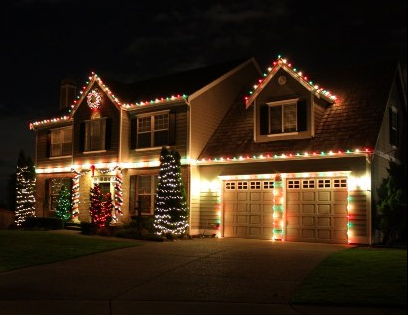
Christmas lights brighten the vacation season and make celebrations feel detailed with the sparkle and dazzle they showcase. The Christmas enthusiasts among us often go entirely, essentially wearing a light show for this most magical of holidays. But if you're feeling less confident in your decorating abilities, well, you're in good company. We could help you determine the right type and amount of Christmas lights to buy and install. This guide will help you identify the very best lights for your requirements – and more.
Kinds of Christmas Lights & Bulbs
Christmas bulbs and lights come in different styles and designs and are categorized into two main classes:
Indoors or Outdoors Lights
Indoor and outdoor Christmas lights look alike, but they are built differently. Outdoor Christmas lights are made to withstand both cold and wet conditions of the season. Snow and moisture could cause electrical issues; hence outdoor lights are created to be water-resistant or waterproof. When purchasing lights to be utilized outdoors, search for products with a tag marked underwriters lab (UL). This means the lights meet national industry standards with the American National Standards Institute.
On one other hand, when selecting indoor lights, make sure to consider:
the overall length of the strand
just how many strings can link to one outlet
and whether all of the lights will go out if a light burns out
These all-important factors will help you find the best product to decorate your home. Before stringing up the lights, consider how and where you'll power your indoor Christmas lights. Typically, string lights must be attached to a store, so consider whether you may need an expansion cord to really make the light reach it.
Manufacturers label whether their holiday lights were created for indoor or outdoor use on the box. You can use outdoor Christmas lights indoors, but it is not advisable to utilize the latter outdoors.
LED or Incandescent
Christmas lights are also made of two main designs: incandescent and light-emitting diodes (LED). LED Christmas lights are relatively new and have nearly phased out incandescent bulbs due to their sturdy design and many benefits.
Incandescent lights have a glass bulb with a metallic filament and heating gas. Electricity heats the filament, making it light the gas. On the other hand, LED lights feature light-emitting diodes that light up when charged. Their simplistic design is sold with many benefits, including:
Energy efficiency – LED lights use about a tenth of the vitality consumed by incandescent lights.
Durability – Incandescent lights break easily due to the fragile glass and filaments, but LED lights can withstand high current, low temperatures, and other extreme conditions.
Safety – Incandescent lights are vulnerable to power surges and extreme weather elements, but LED lights generate minimal heat and don't pose a fire hazard.
Aesthetics – LED lights shine brighter and can emit more colors than incandescent lights, while the latter shine with a yellowish glow that makes them appear faded.
For more details kindly visit christmas light installers Nashville tn.
No comments:
Post a Comment